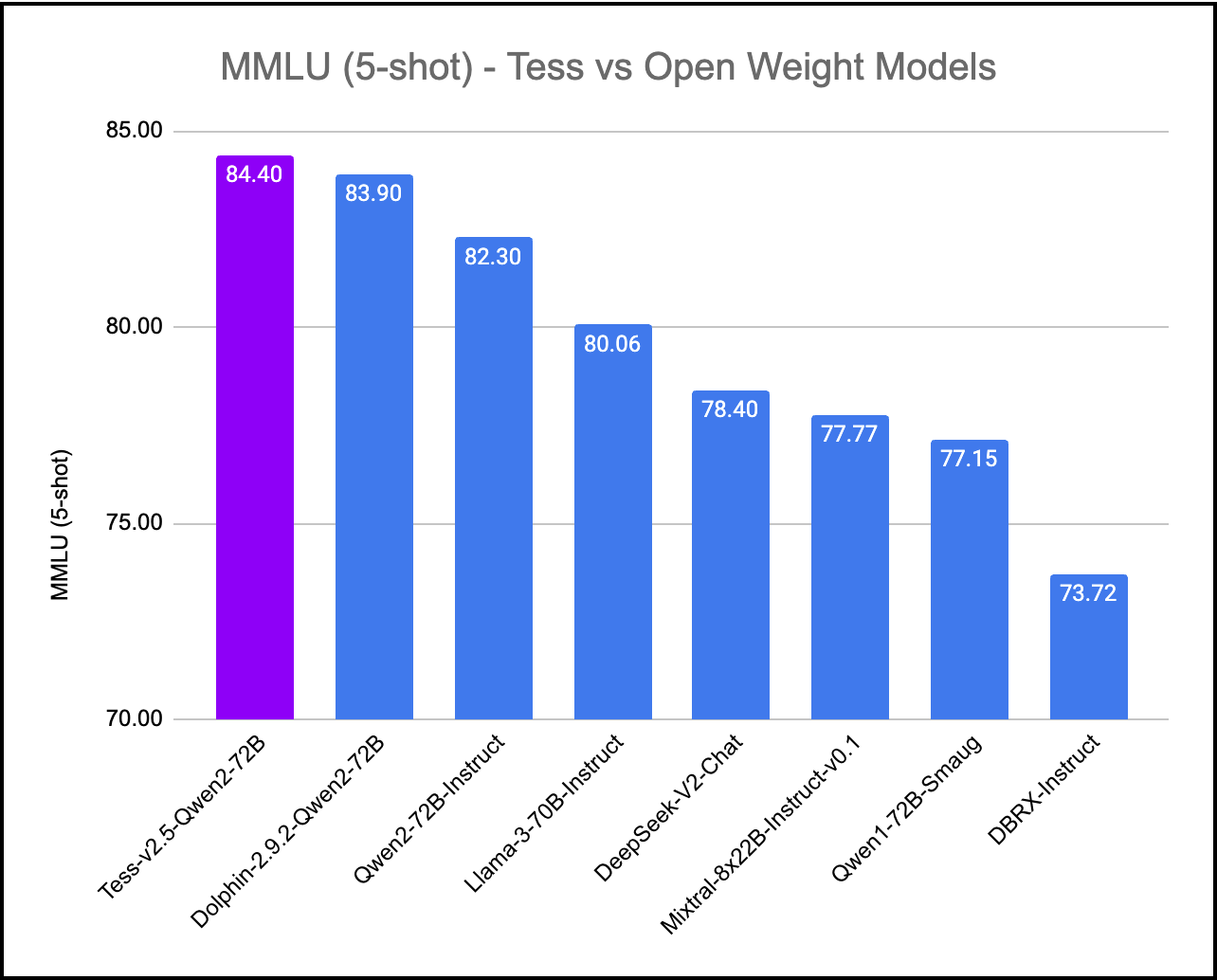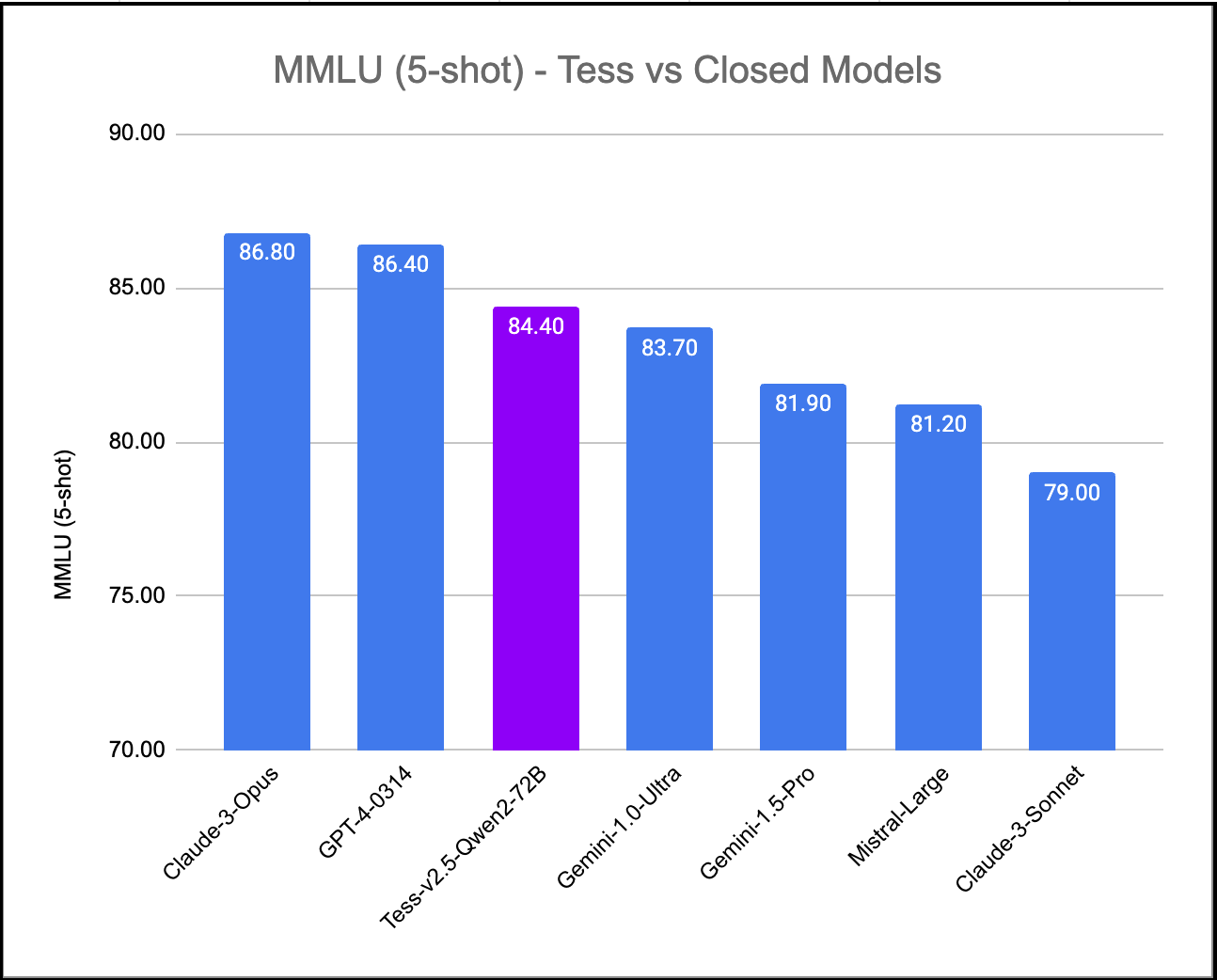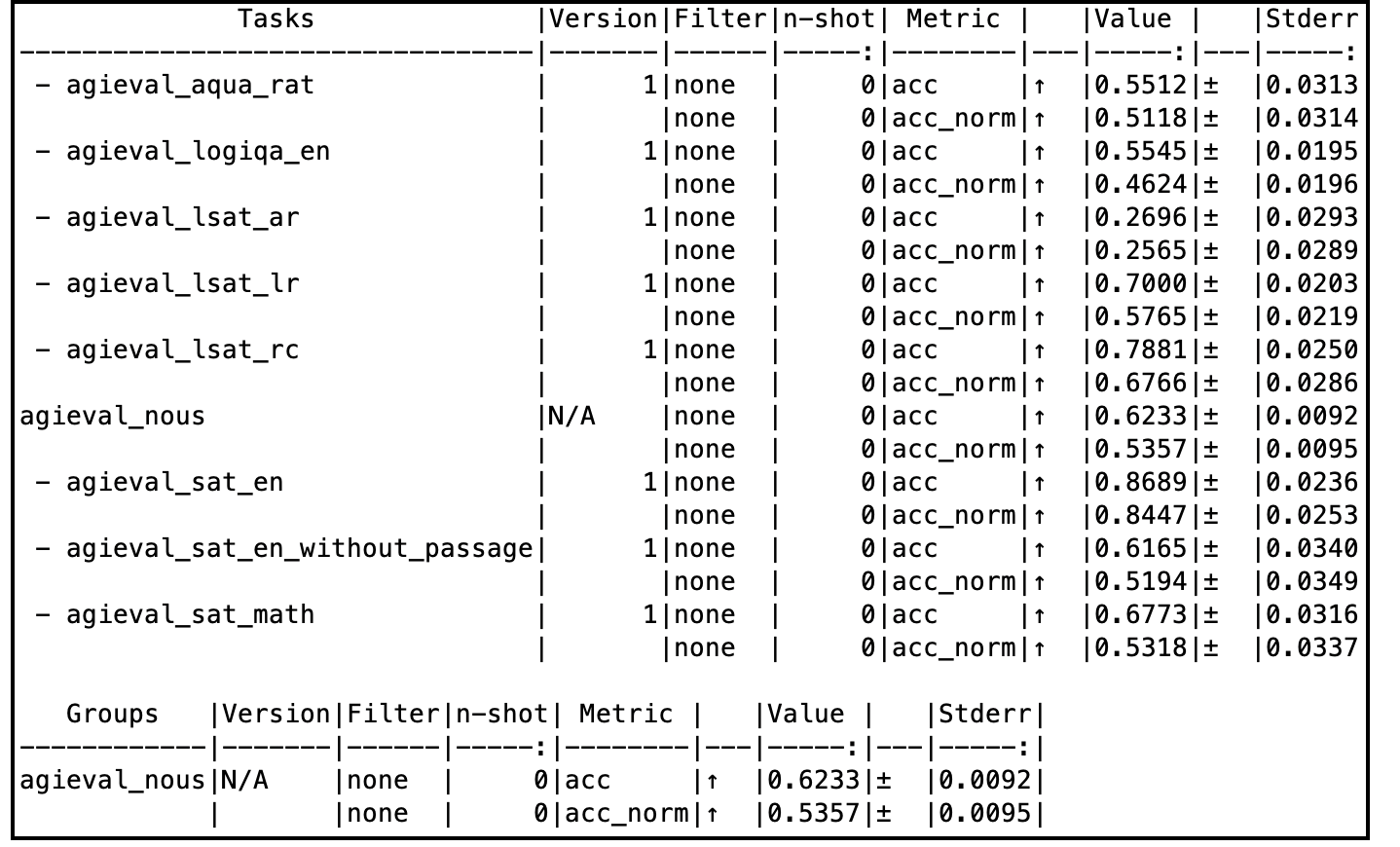File size: 2,694 Bytes
df35569 b86bf2c a5ac61f b86bf2c a5ac61f b86bf2c 12500b2 b86bf2c 12500b2 5f94720 12500b2 5f94720 a5ac61f 12500b2 a5ac61f 19c7b6c 12500b2 19c7b6c |
1 2 3 4 5 6 7 8 9 10 11 12 13 14 15 16 17 18 19 20 21 22 23 24 25 26 27 28 29 30 31 32 33 34 35 36 37 38 39 |
---
license: other
license_name: qwen2
license_link: https://huggingface.co/Qwen/Qwen2-72B/blob/main/LICENSE
---
# Tess-v2.5 (Qwen2-72B)

We've created Tess-v2.5, the latest state-of-the-art model in the Tess series of Large Language Models (LLMs). Tess, short for Tesoro (<em>Treasure</em> in Italian), is the flagship LLM series created by Migel Tissera. Tess-v2.5 brings significant improvements in reasoning capabilities, coding capabilities and mathematics. It is currently the #1 ranked open weight model when evaluated on MMLU (Massive Multitask Language Understanding). It scores higher than all other open weight models including Qwen2-72B-Instruct, Llama3-70B-Instruct, Mixtral-8x22B-Instruct and DBRX-Instruct. Further, when evaluated on MMLU, Tess-v2.5 (Qwen2-72B) model outperforms even the frontier closed models Gemini-1.0-Ultra, Gemini-1.5-Pro, Mistral-Large and Claude-3-Sonnet.
Tess-v2.5 (Qwen2-72B) was fine-tuned over the newly released Qwen2-72B base, using the Tess-v2.5 dataset that contain 300K samples spanning multiple topics, including business and management, marketing, history, social sciences, arts, STEM subjects and computer programming. This dataset was synthetically generated using the [Sensei](https://github.com/migtissera/Sensei) framework, using multiple frontier models such as GPT-4-Turbo, Claude-Opus and Mistral-Large.
The compute for this model was generously sponsored by [KindoAI](https://kindo.ai).
When evaluated on a subset of AGIEval (Nous), this model compares very well with the godfather GPT-4-0314 model as well.
# Training Process
Tess-v2.5 model was initiated with the base weights of Qwen2-72B. Then it was fine-tuned with the Tess-v2.5 dataset, using Axolotl as the training framework. Most of Tess models follow a common fine-tuning methodology: low learning rates, low number of epochs, and uses very high quality and diverse data. This model was fine-tuned on a 4xA100 VM on Microsoft Azure for 4 days. The model has not been aligned with RLHF or DPO.
The author believes that model's capabilities seem to come primariliy from the pre-training process. This is the foundation for every fine-tune of Tess models.
# Evaluation Results
## MMLU (Massive Multitask Language Understanding)


## AGIEval

|